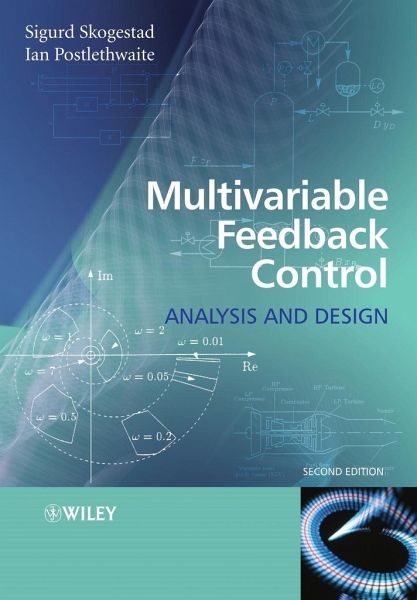
Multivariable Feedback Control
Analysis and Design

PAYBACK Punkte
34 °P sammeln!
Multivariable Feedback Control: Analysis and Design, Second Edition presents a rigorous, yet easily readable, introduction to the analysis and design of robust multivariable control systems. Focusing on practical feedback control and not on system theory in general, this book provides the reader with insights into the opportunities and limitations of feedback control. Taking into account the latest developments in the field, this fully revised and updated second edition: features a new chapter devoted to the use of linear matrix inequalities (LMIs); presents current results on fundamental perf...
Multivariable Feedback Control: Analysis and Design, Second Edition presents a rigorous, yet easily readable, introduction to the analysis and design of robust multivariable control systems. Focusing on practical feedback control and not on system theory in general, this book provides the reader with insights into the opportunities and limitations of feedback control. Taking into account the latest developments in the field, this fully revised and updated second edition: features a new chapter devoted to the use of linear matrix inequalities (LMIs); presents current results on fundamental performance limitations introduced by RHP poles and RHP zeros; introduces updated material on the selection of controlled variables and self optimizing control; provides simple IMC tuning rules for PID control; covers additional material including unstable plants, the feedback amplifier, the lower gain margin and a clear strategy for incorporating integral action into LQG control; includes numerous worked examples, exercises and case studies, which make frequent use of Matlab and the new Robust Control toolbox. Multivariable Feedback Control: Analysis and Design, Second Edition is an excellent resource for advanced undergraduate and graduate courses studying multivariable control. It is also an invaluable tool for engineers who want to understand multivariable control, its limitations, and how it can be applied in practice. The analysis techniques and the material on control structure design should prove very useful in the new emerging area of systems biology. Reviews of the first edition: "Being rich in insights and practical tips on controller design, the book should also prove to be very beneficial to industrial control engineers, both as a reference book and as an educational tool." Applied Mechanics Reviews "In summary, this book can be strongly recommended not only as a basic text in multivariable control techniques for graduate and undergraduate students, but also as a valuable source of information for control engineers." International Journal of Adaptive Control and Signal Processing


